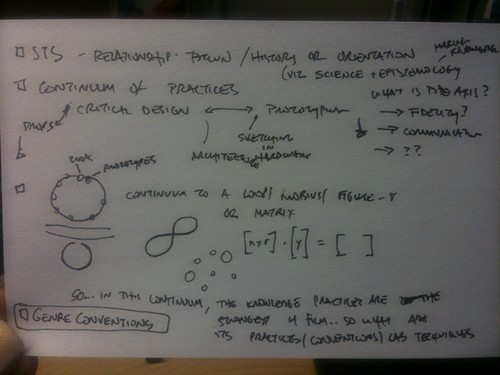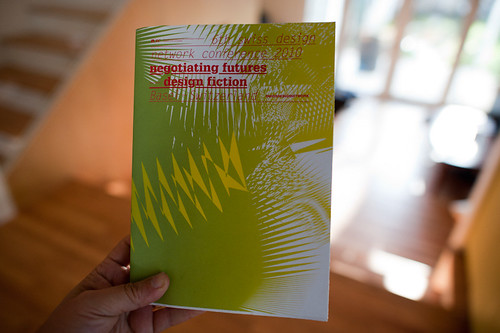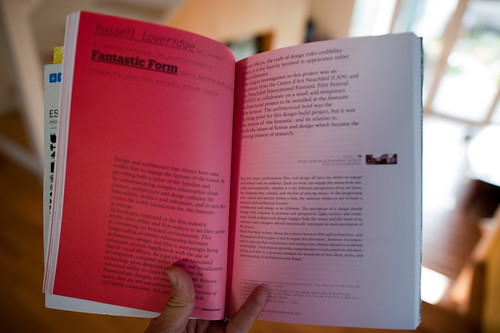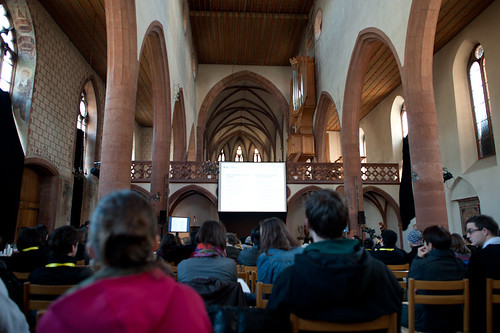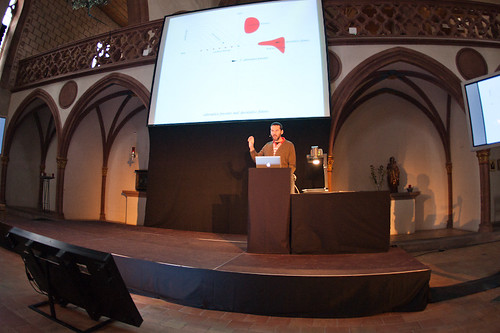This is a notecard when I sort of figured out what I wanted to talk about at the Swiss Design Network conference held a few or four weeks ago.
I ended up with something a bit different, but I think carried on with the sentiments of these scrawled notes. The theme of design fiction continues, and what I wrote as a basis for the keynote talk and following discussions is derived a bit from the thinking that was scratched into this card. But, what I think I lost hold of was perhaps a stronger emphasis on the relationship between design, fiction and the making of knowledge — the epistemological aspects of making new things.
No clear way forward on that, but there are some elements yet to be explored.
In any case — I wanted to provide a link to the paper I wrote that accompanied the nicely designed conference proceedings. At the bottom of the post is a link to the PDF of my own paper submission.
I have some additional notes about the conference as well.
James Auger‘s talk was a clear description of his design/art/technology explorations that help describe why and how things/technologies become products. James is doing this from a wonderful perspective — the domestication of things, and the lineages of domestication. He provided this example — from the wolf to strange dogs dressed up like people, or with designer clothing on them. This to me is a simple, concise way of transforming the extraordinary into the ordinary, and everyday — domestication is one example of this. If you can imagine the most ferocious canine which was the great-great-great…grandfather of the variety of wierdly domesticated and kindred dogs (like the dogs people in Los Angeles carry around in their pocketbooks or in baskets) you can begin to imagine anything out of the ordinary becoming quite ordinary and even mundane. Nearly everyone can have a dog because that animal has been made normal and quotidian.
That path from extraordinary to everyday is an important process in the route to productization — making something that is almost illegible as a thing, and making it routine. James also showed the example of a computer from 1927 — and here you can imagine a complex, analog device overwhelming in its obscurity from our vantage point today — to the thing that is quite a number of homes around the world, as ordinary as you can imagine for many of us.
I found the simplicity of this point very compelling — and it is one of those conventions that I think can help in the communication and thinking-through of new ideas. Making the extraordinary ordinary. A convention of designing with fiction.
James also made the point that design fiction might be better stated as “design faction” — paraphrasing his point he said “calling it fiction you lose some of the reality of its ‘existence’ as a social object of some sort.”
There were a number of other intriguing presentations — not all of which I could make as I had to decide between these and workshops which happened simultaneously. I would like to point out an intriguing talk whose paper appears in the proceedings. It is called “Spaceflight Settings as Laboratories for Critical Design” by Regina Peldszus and Hilary Dalke. (Regina and Hilary and Chris Welch also have a paper you’ll enjoy called Science Fiction Film as Design Scenario Exercise for Psychological Habitability: Production Designs 1955-2009 in which they look at the production design in Kubrick’s 2001: A Space Odyssey as a way to run through scenarios related to living in space for a long, long time.)
Overall, I enjoyed the conference and the variety of considerations about design fiction, when and where it operates were useful for my ears. It’s encouraging that design fiction could be taken up as a theme for an entire two days of an event with workshops and everything. That’s actually very encouraging. It’ll be interesting to see where and how far the idea evolves into a practice.
Design Fiction – Props And Prototypes, Swiss Design Network Conference ((PDF))
